NOVA STAR MCTRL R5 LED Display Controller Owner’s Manual
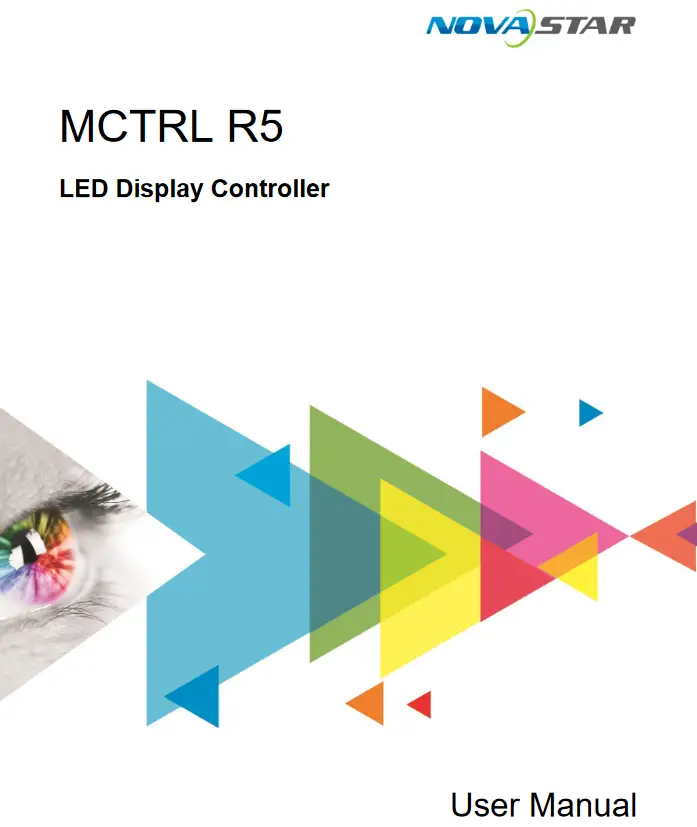
Change History
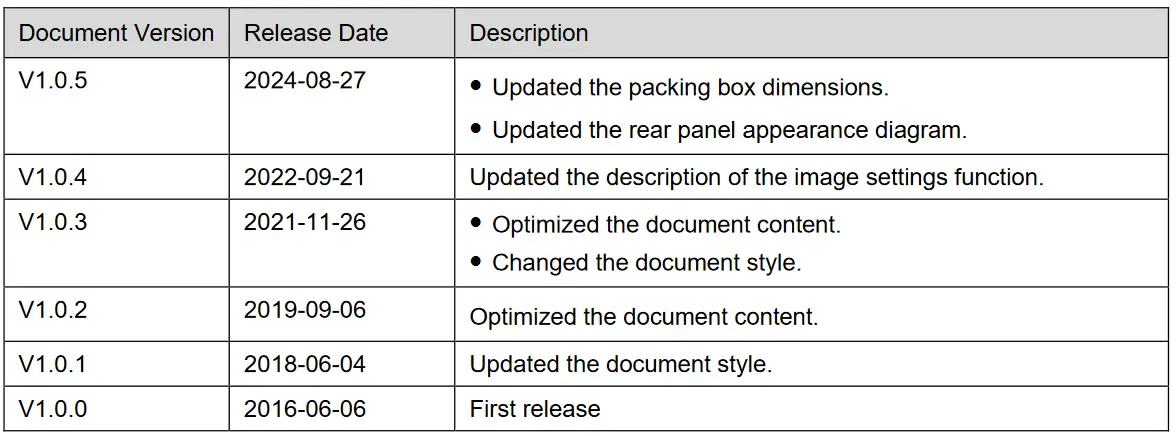
Overview
Introduction
The MCTRL R5 is the first LED display controller developed by Xi’an NovaStar Tech Co., Ltd. (hereinafter referred to as NovaStar) that supports image rotation. A single MCTRL R5 features a load capacity of up to 3840×1080@60Hz. It supports any custom resolutions within this capacity, meeting the on-site configuration requirements of ultra-long or ultra-wide LED displays.
Working with the A8s or A10s Pro receiving card, the MCTRL R5 allows for free screen configuration and image rotation at any angle in SmartLCT, presenting a variety of images and bringing an amazing visual experience to users.
The MCTRL R5 is stable, reliable and powerful, dedicated to providing an ultimate visual experience. It can be mainly used in the rental and fixed installation applications, such as concerts, live events, security monitoring centers, Olympic Games and various sports centers.
Features
- A variety of input connectors
− 1x 6G-SDI
− 1 × HDMI 1.4
− 1x DL-DVI - 8x Gigabit Ethernet outputs and 2x optical outputs
- Image rotation at any angle
Work with the A8s or A10s Pro receiving card and SmartLCT to support image rotation at any angle. - Support for 8-bit and 10-bit video sources
- Pixel level brightness and chroma calibration
Working with NovaLCT and NovaCLB, the receiving card supports brightness and chroma calibration on each LED, which can effectively remove color discrepancies and greatly improve LED display brightness and chroma consistency, allowing for better image quality. - Firmware update via USB port on the front panel
- Up to 8 devices can be cascaded.
Table 1-1 Feature constraints

Appearance
Front Panel

Rear Panel

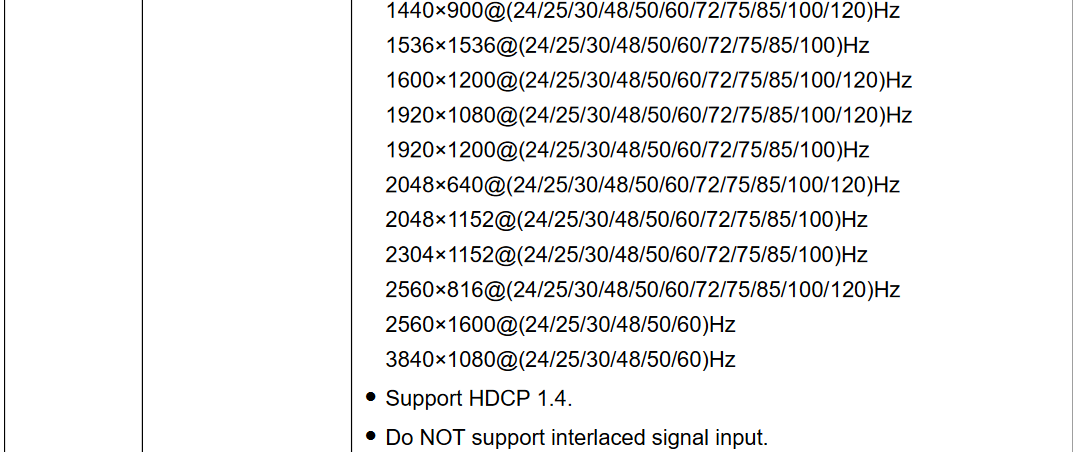



Applications
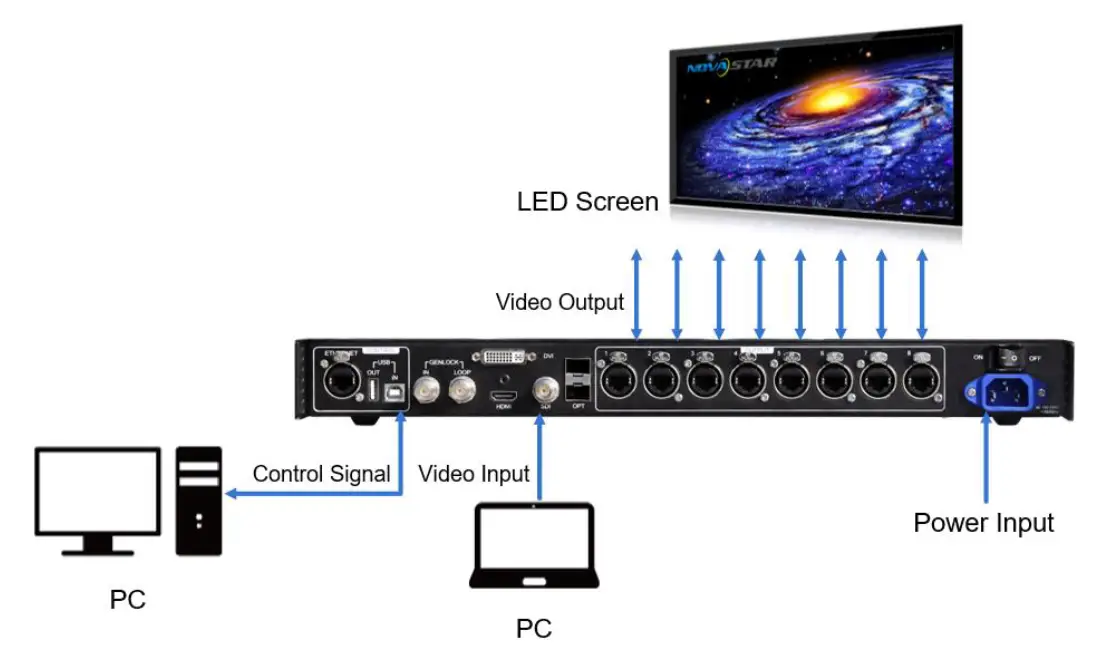
Cascade Devices
To control multiple MCTRL R5 devices simultaneously, follow the figure below to cascade them via the USB IN and USB OUT ports. Up to 8 devices can be cascaded.

Home Screen
The figure below shows the home screen of the MCTRL R5.


The MCTRL R5 is powerful and easy to use. You can quickly configure the LED screen to light it up and display the entire input source following steps in 6.1 Light a Screen Quickly. With other menu settings, you can further improve the LED screen display effect.
Light a Screen Quickly
Following the three steps below, namely Set Input Source > Set Input Resolution > Quickly Configure the Screen, you can quickly light up the LED screen to display the entire input source.
Step 1: Set Input Source
Supported input video sources include SDI, HDMI and DVI. Select an input source that matches the type of the inputted external video source.
Constraints:
- Only one input source can be selected at the same time.
- SDI video sources do not support the following functions:
− Preset resolution
− Custom resolution - The 10-bit video sources are not supported when calibration function is enabled.
Figure 6-1 Input source
Step 1 On the home screen, press the knob to enter the main menu.
Step 2 Choose Input Settings > Input Source to enter its submenu.
Step 3 Select the target input source and press the knob to enable it.
Step 2: Set Input Resolution
Constrains: SDI input sources do not support input resolution settings.
The input resolution can be set through either of the following methods
Method 1: Select a preset resolution
Select an appropriate preset resolution and refresh rate as the input resolution.
Figure 6-2 Preset resolution
Step 1 On the home screen, press the knob to enter the main menu.
Step 2 Choose Input Settings > Preset Resolution to enter its submenu.
Step 3 Select a resolution and refresh rate, and press the knob to apply them.
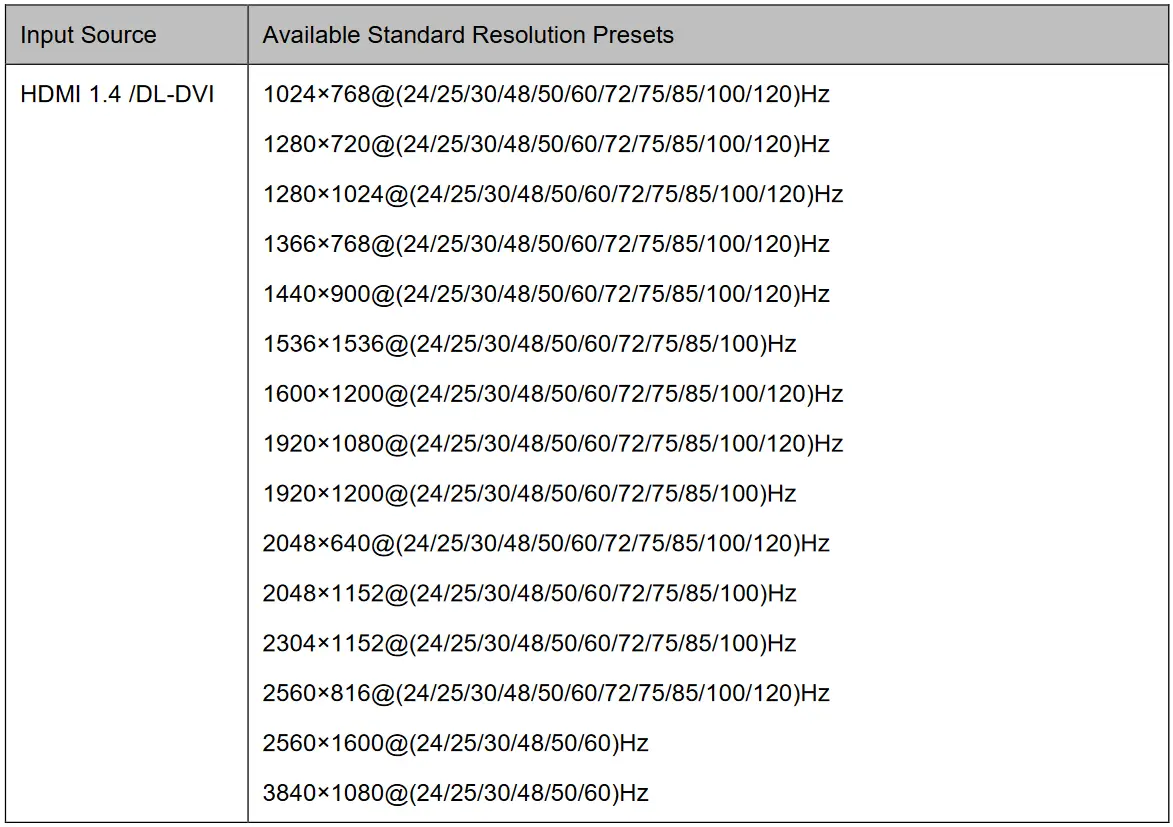
Method 2: Customize a resolution
Customize a resolution by setting a custom width, height and refresh rate.
Figure 6-3 Custom resolution
Step 1 On the home screen, press the knob to enter the main menu.
Step 2 Choose Input Settings > Custom Resolution to enter its submenu and set the screen width, height and refresh rate.
Step 3 Select Apply and press the knob to apply the custom resolution.
Step 3: Quickly Configure the Screen
Follow the steps below to complete quick screen configuration.
Step 1 On the home screen, press the knob to enter the main menu.
Step 2 Choose Screen Settings > Quick Config to enter its submenu and set the parameters.
- Set Cabinet Row Qty and Cabinet Column Qty (numbers of cabinet rows and columns to be loaded) according to the actual situation of the screen.
- Set Port1 Cabinet Qty (number of cabinets loaded by Ethernet port 1). The device has restrictions on the number of cabinets loaded by the Ethernet ports. For details, see Note a).
- Set Data Flow of the screen. For details, see Note c), d), and e).

Brightness Adjustment
Screen brightness allows you to adjust the LED screen brightness in an eye-friendly way according to the current ambient brightness. Besides, appropriate screen brightness can extend the service life of the LED screen.
Figure 6-4 Brightness adjustment
Step 1 On the home screen, press the knob to enter the main menu.
Step 2 Select Brightness and press the knob to confirm the selection.
Step 3 Rotate the knob to adjust the brightness value. You can see the adjustment result on the LED screen in real time. Press the knob to apply the brightness you set when you are satisfied with it.
Screen Settings
Configure the LED screen to ensure the screen can display the entire input source normally.
Screen configuration methods include quick and advanced configurations. There are constrains on the two methods, explained as below.
- The two methods cannot be enabled at the same time.
- After the screen is configured in NovaLCT, do not use any of the two methods on the MCTRL R5 to configure the screen again.
Quick Configuration
Configure the whole LED screen uniformly and quickly. For details, see 6.1 Light a Screen Quickly.
Advanced Configuration
Set parameters for each Ethernet port, including number of cabinet rows and columns (Cabinet Row Qty and Cabinet Column Qty), horizontal offset (Start X), vertical offset (Start Y), and data flow.
Figure 6-5 Advanced configuration
Step 1 Choose Screen Settings > Advanced Config and press the knob.
Step 2 In the caution dialog screen, select Yes to enter the advanced configuration screen.
Step 3 Enable Advance Config, select an Ethernet port, set the parameters for it, and apply the settings.
Step 4 Select the next Ethernet port to continue setting until all the Ethernet ports are set.
Image Offset
After configuring the screen, adjust the horizontal and vertical offsets (Start X and Start Y) of the overall display image to ensure it is displayed in the desired position.
Figure 6-6 Image offset
Image Rotation
There are 2 rotation methods: port rotation and screen rotation.
- Port rotation: Display rotation of cabinets loaded by Ethernet port (For example, set the rotation angle of port 1, and the display of cabinets loaded by port 1 will rotate according to the angle)
- Screen rotation: Rotation of the entire LED display according to the rotation angle
Figure 6-7 Image rotation
Step 1 On the home screen, press the knob to enter the main menu.
Step 2 Choose Rotation Settings > Rotation Enable, and choose Enable.
Step 3 Choose Port Rotate or Screen Rotate and set the rotation step and angle.
Note
- The screen must be configured on the MCTRL R5 before rotation setting in the LCD menu.
- The screen must be configured in SmartLCT before rotation setting in SmartLCT.
- After screen configuration is done in SmartLCT, when you set rotation function on the MCTRL R5, a message saying “Reconfig screen, are you sure?” will appear. Please choose Yes and perform rotation settings.
- A 10-bit input does not support image rotation.
- The rotation function is disabled when the calibration function is enabled.
Display Control
Control the display status on the LED screen.
Figure 6-8 Display control
- Normal: Display the content of the current input source normally.
- Black Out: Make the LED screen go black and do not display the input source. The input source is still being played in the background.
- Freeze: Make the LED screen always display the frame when frozen. The input source is still being played in the background.
- Test Pattern: Test patterns are used to check the display effect and pixel operating status. There are 8 test patterns, including pure colors and line patterns.
- Image Settings: Set the color temperature, brightness of red, green and blue, and gamma value of the image.
Note
The image settings function is disabled when the calibration function is enabled.
Advanced Settings
Mapping Function
When this function is enabled, each cabinet of the screen will display the sequence number of the cabinet and the Ethernet port that loads the cabinet.
Figure 6-9 Mapping function
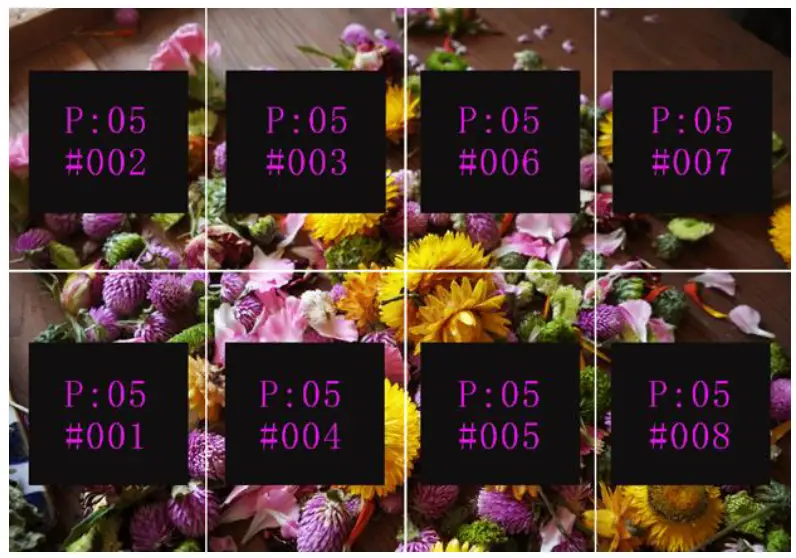
Example: “P:01” stands for the Ethernet port number and “#001” stands for the cabinet number.
Note
The receiving cards used in the system must support the Mapping function.
Load Cabinet Configuration Files
Before you begin: Save the cabinet configuration file (*.rcfgx or *.rcfg) to the local PC.
Step 1 Run NovaLCT and choose Tools > Controller Cabinet Configuration File Import.
Step 2 On the displayed page, select the currently used serial port or Ethernet port, click Add Configuration File to select and add a cabinet configuration file.
Step 3 Click Save the Change to HW to save the change to the controller.
Figure 6-10 Importing configuration file of controller cabinet
Note
Configuration files of irregular cabinets are not supported.
Set Alarm Thresholds
Set the alarm thresholds for device temperature and voltage. When a threshold is exceeded, its corresponding icon on the home screen will be flashing, instead of displaying the value.
Figure 6-11 Setting alarm thresholds
 : Voltage alarm, icon flashing. Voltage threshold range: 3.5 V to 7.5 V
: Voltage alarm, icon flashing. Voltage threshold range: 3.5 V to 7.5 V : Temperature alarm, icon flashing. Temperature threshold range: –20℃ to +85℃
: Temperature alarm, icon flashing. Temperature threshold range: –20℃ to +85℃ : Voltage and temperature alarms at the same time, icon flashing
: Voltage and temperature alarms at the same time, icon flashing
Note
When there are no temperature or voltage alarms, the home screen will display the backup status.
Save to RV Card
By using this function, you can:
- Send and save the configuration information to the receiving cards, including brightness, color temperature, Gamma and display settings.
- Overwrite the information saved to the receiving card earlier.
- Ensure that the data saved in the receiving cards will not be lost upon power failure of receiving cards.
Redundancy Settings
Set the controller as the primary or backup device. When the controller works as a backup device, set the data flow direction as opposite to that of the primary device.
Figure 6-12 Redundancy settings
Note
If the controller is set as the backup device, when the primary device fails, the backup device will immediately take over the work of the primary device, that is, the backup takes effect. After the backup takes effect, the target Ethernet port icons on the home screen will have marks in top flashing once every 1 second.
Presettings
Choose Advanced Settings > Presettings to save current settings as a preset. Up to 10 presets can be saved.
- Save: Save current parameters as a preset.
- Load: Read back the parameters from a saved preset.
- Delete: Delete the parameters saved in a preset.
Input Backup
Set a backup video source for each primary video source. Other input video sources supported by the controller can be set as backup video sources.
After a backup video source takes effect, the video source selection is irreversible.


Factory Reset
Reset the controller parameters to factory settings.
OLED Brightness
Adjust the brightness of the OLED menu screen on the front panel. The brightness range is 4 to 15.
HW Version
Check the hardware version of the controller. If a new version is released, you can connect the controller to a PC to update the firmware programs in NovaLCT V5.2.0 or later.
Communication Settings
Set the communication mode and network parameters of the MCTRL R5.
Figure 6-13 Communication mode
- Communication mode: Include USB preferred and Local Area Network (LAN) preferred.
The controller connects to PC via USB port and Ethernet port. If USB Preferred is selected, the PC prefers to communicate with the controller via the USB port, or else via the Ethernet port.
Figure 6-14 Network settings
- The network settings can be done manually or automatically.
− Manual setting parameters include controller IP address and subnet mask.
− Automatic settings can read the network parameters automatically. - Reset: Reset the parameters to defaults.
Language
Change the system language of the device.
Operations on PC
Software Operations on PC
NovaLCT
Connect the MCTRL R5 to the control computer installed with NovaLCT V5.2.0 or later via USB port to perform screen configuration, brightness adjustment, calibration, display control, monitoring, etc. For details on their operations, see NovaLCT LED Configuration Tool for Synchronous Control System User Manual.
Figure 7-1 NovaLCT UI
SmartLCT
Connect the MCTRL R5 to the control computer installed with SmartLCT V3.4.0 or later via USB port to perform building-block screen configuration, seam brightness adjustment, real-time monitoring, brightness adjustment, hot backup, etc. For details on their operations, see the SmartLCT user manual.
Figure 7-2 SmartLCT UI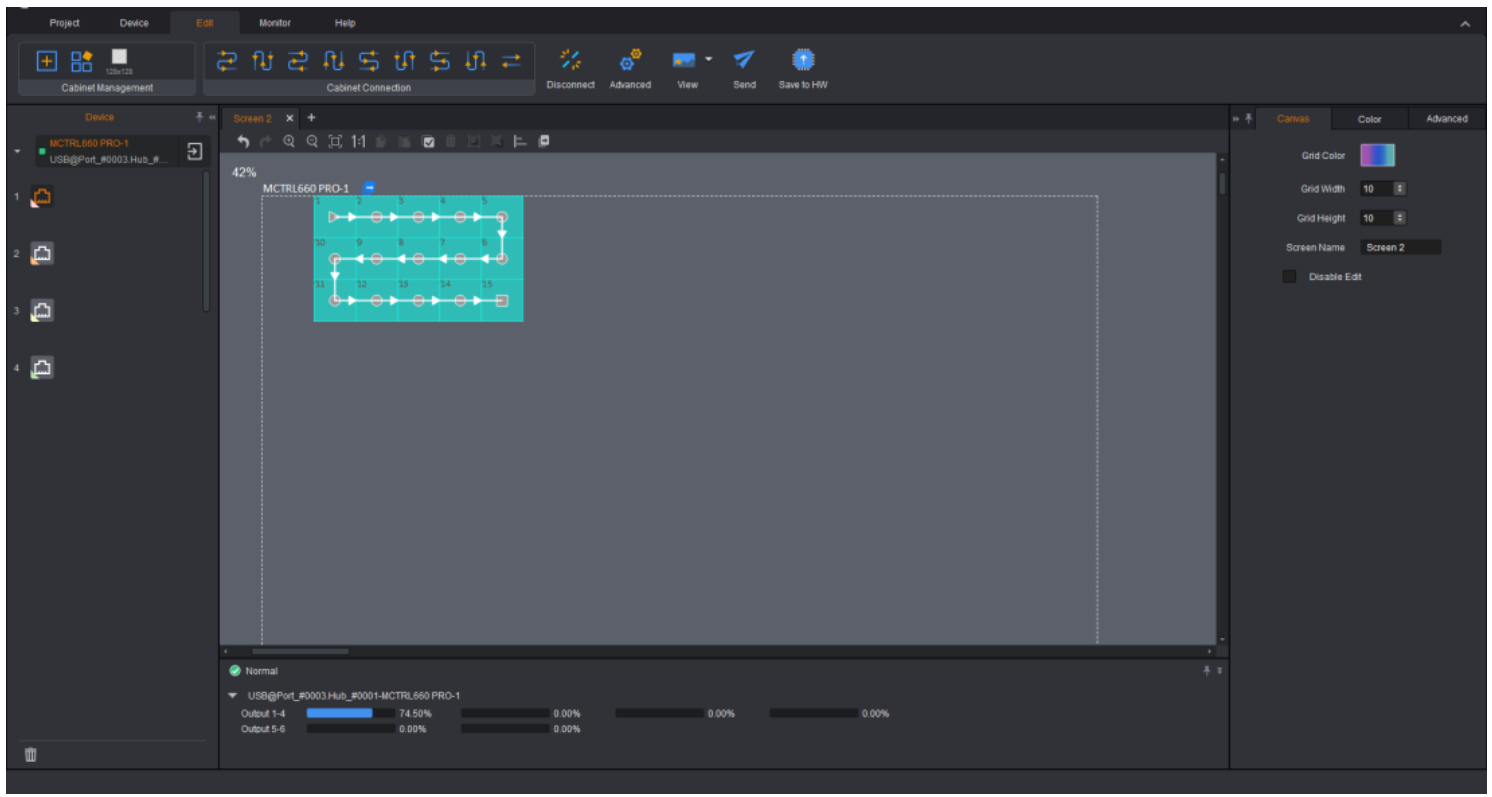
Firmware Update
NovaLCT
In NovaLCT, perform the following steps to update the firmware.
Step 1 Run the NovaLCT. On the menu bar, go to User > Advanced Synchronous System User Login. Enter the password and click Login.
Step 2 Type the secret code “admin” to open the program loading page.
Step 3 Click Browse, select a program package, and click Update.
SmartLCT
In SmartLCT, perform the following steps to update the firmware.
Step 1 Run SmartLCT and enter the V-Sender page.
Step 2 In the properties area on the right, click ![]() to enter the Firmware Upgrade page.
to enter the Firmware Upgrade page.
Step 3 Click ![]() to select the update program path.
to select the update program path.
Step 4 Click Update.
Specifications
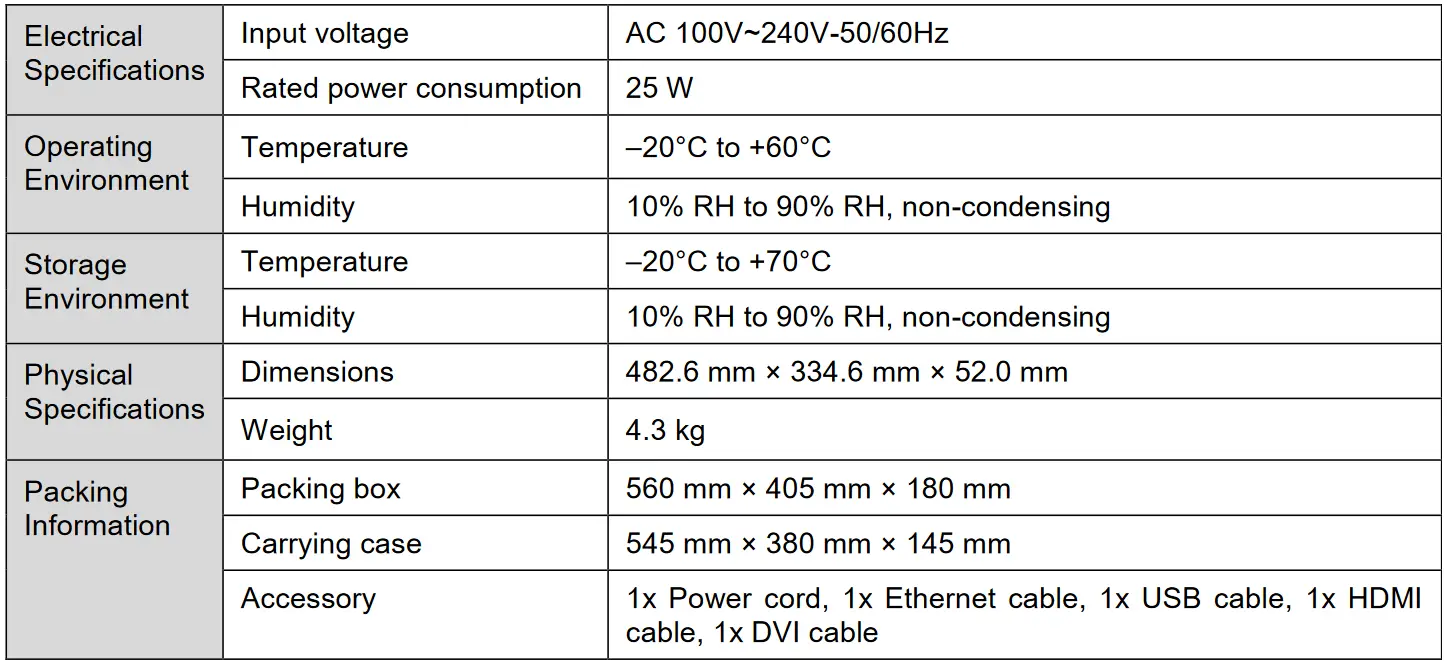

Official website
www.novastar.tech
Technical support
support@novastar.tech
Documents / Resources
 | NOVA STAR MCTRL R5 LED Display Controller [pdf] Owner's Manual MCTRL R5 LED Display Controller, MCTRL R5, LED Display Controller, Display Controller, Controller |